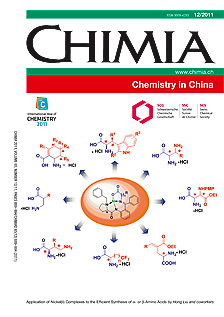Protoporphyrinogen Oxidase Inhibitor: An Ideal Target for Herbicide Discovery
DOI:
https://doi.org/10.2533/chimia.2011.961Keywords:
Herbicide, Inhibitor, Molecular design, Protoporphyrinogen oxidase, QsarAbstract
As the last common enzyme in the biosynthetic pathway leading to heme and chlorophyll, protoporphyrinogen oxidase (PPO; EC 1.3.3.4) is an ideal target for herbicide development. Currently, about 30 PPO inhibitors have been developed as agricultural herbicides. PPO inhibitors have displayed environmentally benign, but advantageous characteristics, including low toxicity, low effective concentration, broad herbicidal spectrum (active against both monocotyledon and dicotyledon weeds), quick onset of action, and long lasting effect. Over the last several years, great achievements have been made in revealing the structural biology of PPO. Five PPO crystal structures, four isolated in enzyme-inhibitor complexes and one in the native form, have been determined, including those from Nicotiana tabacum, Myxococcus Xanthus, Bacillus subtilis, and human. Although PPO inhibitors have been developed for over forty years, we continue to uncover exciting future prospects for novel PPO-inhibiting herbicides. In this review, we have summarized the structures of PPOs from plants, human, and bacteria; the interactions between PPOs and inhibitors; the quantitative structure–activity relationships of PPO inhibitors; and the molecular design of new PPO inhibitors.Downloads
Published
2011-12-14
How to Cite
[1]
G.-F. Hao, Y. Zuo, S.-G. Yang, G.-F. Yang, Chimia 2011, 65, 961, DOI: 10.2533/chimia.2011.961.
Issue
Section
Scientific Articles
License
Copyright (c) 2011 Swiss Chemical Society

This work is licensed under a Creative Commons Attribution-NonCommercial 4.0 International License.







